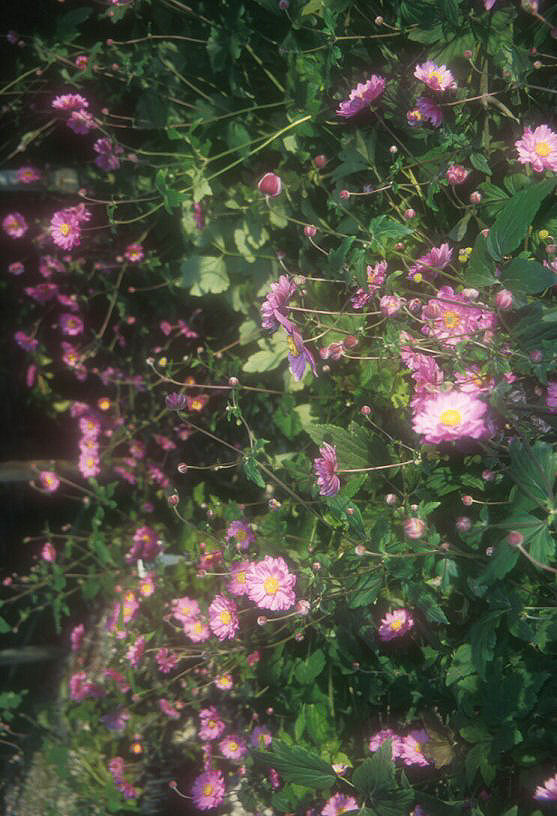| Botanical Name: Anemone x hybrida 'Pamina' | |
| Common Name: Pamina Japanese Anemone |

-
Anatomy
-
Culture
-
Design
Plant Type
Perennial
Height Range
1-3'
Flower Color
Pink
Flower Season
Summer, Fall
Leaf Color
Green
Bark Color
n/a
Fruit Color
n/a
Fruit Season
n/a
Sun
Half, Shade
Water
Medium, High
Growth Rate
Moderate
Soil Type
Clay, Loam
Soil Condition
Average, Rich, Well-drained, Moist
Soil pH
Acid, Neutral, Basic
Adverse Factors
Invasive
Design Styles
English Cottage, Formal, Japanese, Woodland
Accenting Features
Fall Color, Showy Flowers
Seasonal Interest
Summer, Fall
Location Uses
Perennial Border, Shrub Border, Foundation, Patio, Raised Planter, Walls / Fences
Special Uses
Cut Flowers, Filler, Naturalizing, Small Spaces
Attracts Wildlife
Butterflies
Information by: Stephanie Duer
Photographer:
Photographer:
-
Description
-
Notes
'Pamina' is a anemone hybrid with rose-pink, double petals that bloom August to September on erect, wiry stems which hold the flowers above the foliage. Plant form is mounded, dense, and compact, with deep green, three lobed leaves. Grows about 2 to 3 feet tall and wide.
Grow in well drained, loamy soils in part to full shade. Though it requires more moisture than A. tomentosa, the soil shouldn't be wet and does need to be well draining to avoid the crown rotting. Anemone are vigorous, fibrous-rooted perennials that spread by creeping rhizomes. Resistant to deer and rabbits, but attractive to butterflies. Japanese anemone cultivars are commonly sold as Anemone x hybrida or Anemone japonica.